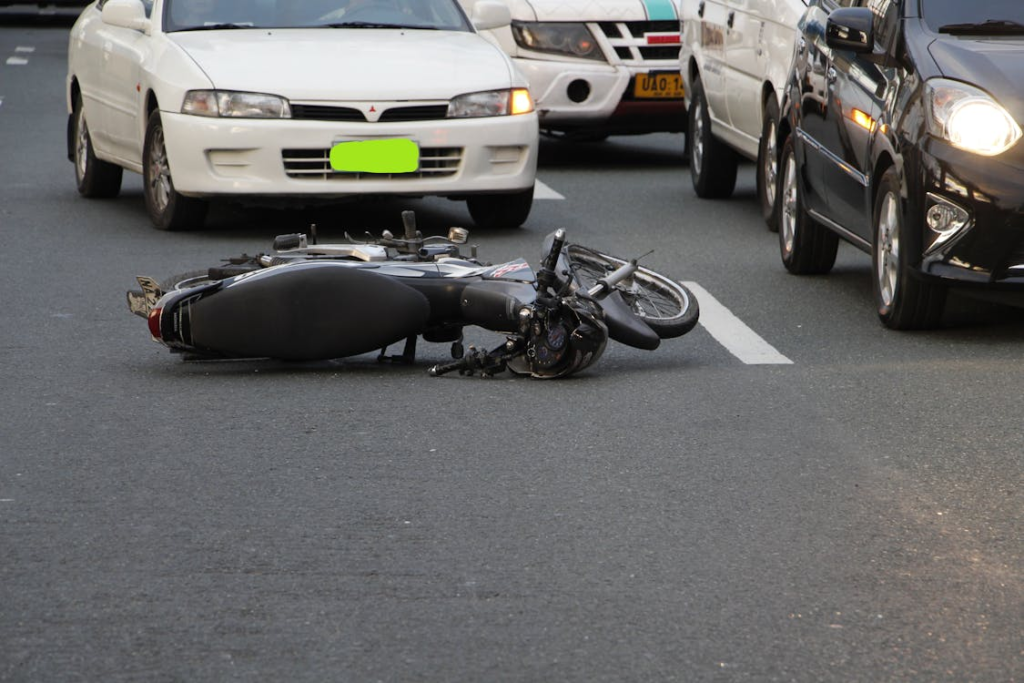Motorcycle accidents are a serious concern for riders worldwide. Whether you’re an experienced biker or just starting, understanding motorcycle accident laws is crucial for your safety and legal protection. This comprehensive guide explores the intricacies of these laws and provides practical advice on what every rider should know.
The Importance of Motorcycle Accident Laws
Every rider knows the thrill of the open road but also must be aware of the risks involved. Motorcycle accident laws are designed to protect you and ensure you receive fair treatment if an accident occurs. These laws help clarify your rights and responsibilities, providing a roadmap for navigating the aftermath of an accident.
Why You Should Understand These Laws
Knowing the ins and outs of motorcycle accident laws can be a lifesaver, literally and figuratively. Firstly, these laws help you understand your rights as a rider. Secondly, they guide you through the steps to take if you are involved in an accident. Lastly, they offer insights into how to seek compensation for injuries and damages.
Who Needs This Information?
This guide is for every motorcyclist, whether you ride daily or occasionally. Understanding these laws not only equips you with the knowledge to handle accidents but also helps you ride more responsibly and safely.
What to Expect from This Guide
In the following sections, we’ll explore common types of motorcycle accidents, discuss legal principles and rights, and detail the steps to take after an accident. We’ll also cover the legal process involved in motorcycle accident cases and share safety tips to prevent accidents.
Common Motorcycle Accidents
Motorcycle accidents can happen in various ways. By identifying the most common types, you can better prepare and take preventive measures.
Lane-Splitting Incidents
Lane-splitting occurs when a motorcyclist rides between two lanes of traffic, usually during heavy congestion. While it can save time, it also increases the risk of accidents. Other drivers might not expect a motorcyclist to be there, leading to sudden lane changes or opening doors.
Rear-End Collisions
These types of accidents often occur when a driver doesn’t notice a motorcyclist stopping or slowing down. Motorcycles can stop faster than cars, and if the driver behind is not paying attention, a rear-end collision can happen.
Intersection Accidents
Intersections are hotspots for accidents. Drivers turning left may not see a motorcyclist going straight. Similarly, motorcyclists making turns must be cautious of oncoming traffic. Both scenarios can lead to serious collisions.
Legal Principles and Rights
Understanding the legal aspects is crucial for any motorcyclist. Knowing your rights can make a significant difference in the outcome of an accident case.
Negligence and Liability
Negligence and liability are pivotal concepts when it comes to motorcycle accident cases. Generally, negligence occurs when a driver fails to act with reasonable care, resulting in harm to others. Understanding who is liable is essential, as it determines who is legally responsible for the damages incurred. This is where a motorcycle accident lawyer becomes invaluable. A skilled lawyer can help you navigate the complexities of proving negligence and establishing liability. They can gather crucial evidence, advocate on your behalf, and ensure you receive fair compensation for your injuries and losses. Engaging a knowledgeable motorcycle accident lawyer not only aids in building a strong case but also provides peace of mind during a challenging time.
Rights of Motorcyclists
Motorcyclists have the same rights as other drivers. This includes the right to use the road, the right to compensation in case of an accident, and the right to be treated fairly by law enforcement and insurance companies.
Comparative Negligence
Some states use a comparative negligence system, meaning both parties can share fault for the accident. Your compensation might be reduced based on your level of responsibility. Understanding this principle is vital for negotiating settlements.
Important Steps After an Accident
What you do immediately after an accident can affect your health, safety, and legal standing. Here’s a step-by-step guide.
Seek Medical Attention
Your health should be your top priority. Even if you feel fine, some injuries may not be immediately apparent. A medical evaluation ensures that all injuries are documented, which is crucial for any legal claims later.
Gather Evidence
Collect as much information as possible at the scene. Take photos of the accident, your injuries, and any damage to your motorcycle. Get contact details from witnesses and note down everything you remember about the incident.
Contact an Attorney
A specialized motorcycle accident attorney can guide you through the legal process. They help protect your rights, handle negotiations with insurance companies, and represent you in court if necessary.
Legal Process for Motorcycle Accident Cases
Navigating the legal process can be complex, but understanding each step can help you be better prepared.
Filing a Claim
The first step is to file a claim with your insurance company or the at-fault party’s insurer. Provide all necessary documentation, including medical records and evidence from the accident scene.
Settlement Negotiations
Often, cases are settled out of court. Your attorney will negotiate with the insurance company to reach a fair settlement. This process can involve multiple rounds of offers and counteroffers.
Going to Trial
If a settlement cannot be reached, your case may go to trial. Your attorney will present evidence and argue your case before a judge or jury. While trials can be lengthy, they sometimes result in higher compensation.
Safety Tips and Prevention
Prevention is always better than cure. Here are some practical tips to help you stay safe on the road.
Wear Proper Gear
Always wear a helmet, gloves, and protective clothing. These can significantly reduce injuries in case of an accident. High-visibility gear makes you more noticeable to other drivers.
Follow Traffic Rules
Obey speed limits, use signals, and avoid risky maneuvers like lane-splitting in heavy traffic. Being predictable makes it easier for other drivers to anticipate your actions.
Stay Alert
Always be aware of your surroundings. Watch for potential hazards, such as debris on the road, and keep a safe distance from other vehicles. Defensive driving can prevent many accidents.
Understanding motorcycle accident laws is essential for every rider. It equips you with the knowledge to protect yourself and ensures you know what to do if an accident occurs. From recognizing common accident types to navigating the legal process, this guide has provided valuable insights to help you ride safely and handle any incidents effectively.
Riding smart means being prepared. Share this guide with fellow riders and encourage them to stay informed. For more detailed advice and personalized legal support, consider reaching out to a specialized motorcycle accident attorney.
Stay safe, and enjoy the ride!






